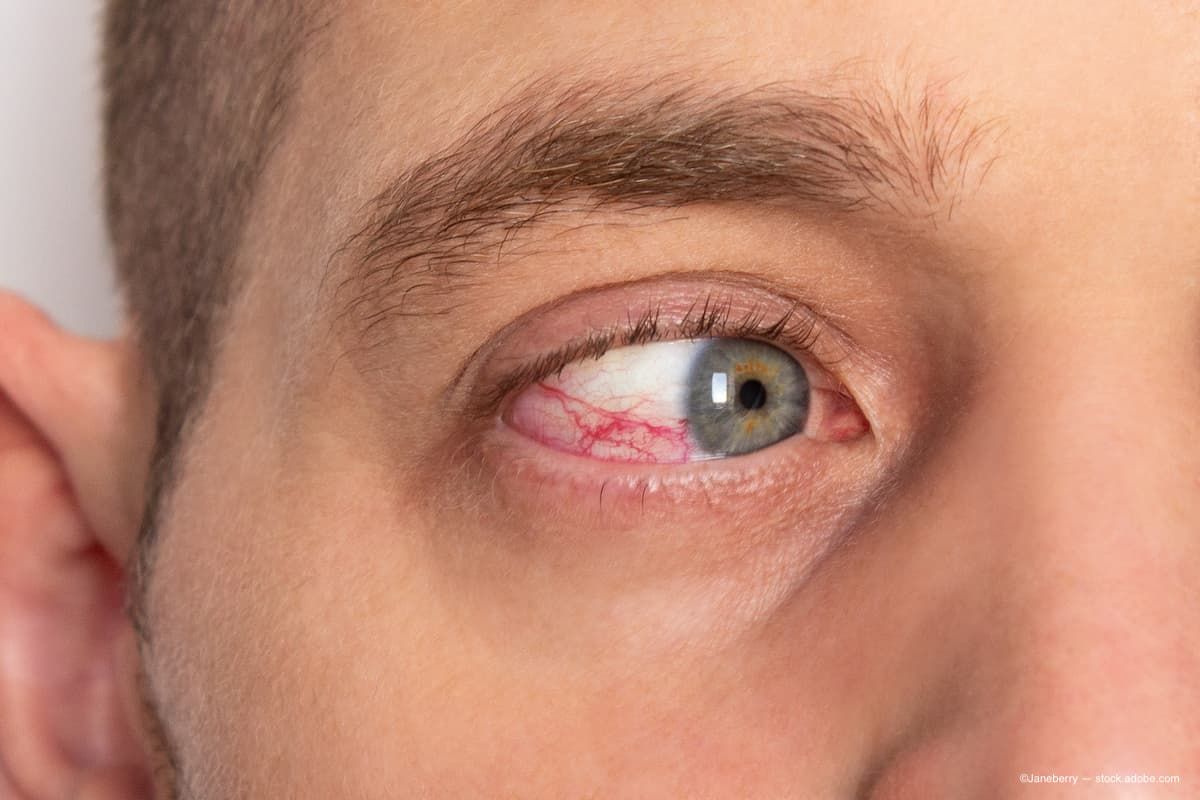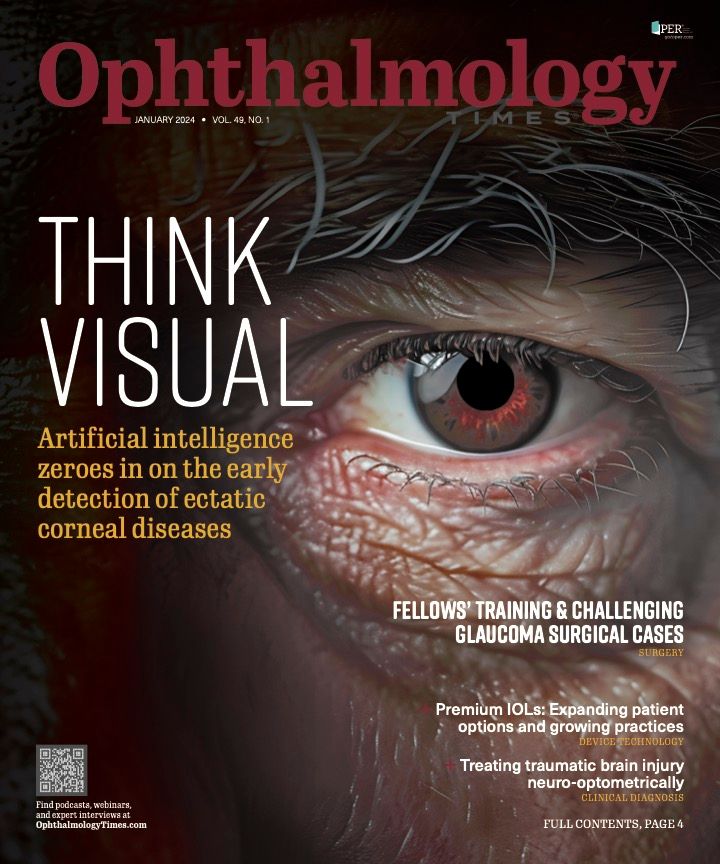Publication
Article
Digital Edition
Durable solutions for managing chronic postoperative uveitis
Author(s):
Ophthalmologist shares pearls from recent roundtable discussion on topic.
(Image Credit: AdobeStock/Janeberry)

Sunil Srivastava, MD, a uveitis and retina specialist at Cleveland Clinic in Ohio, shared valuable insights from a recent roundtable discussion on managing chronic noninfectious uveitis and macular edema (ME) and presented 2 cases in this Ophthalmology Times case-based roundtable.
Case 1: Complicated cataract surgery
The patient was a woman, aged 68 years, who underwent a complicated cataract surgery in her left eye that resulted in a 3-piece sulcus eye well placement. After complications developed, including trephination and lensectomy, the patient developed cystoid ME (CME) and inflammation postoperatively. The consensus of the roundtable discussion for addressing the initial approach to postoperative CME leaned toward topical therapy, specifically difluprednate ophthalmic emulsion 0.05% (Durezol; Novartis), with some panelists considering periocular steroids during eye well placement.
Despite initial improvement, the CME required an intravitreal triamcinolone injection. The discussion emphasized the challenges using a dexamethasone implant (Ozurdex; Allergan) in a patient with a sutured eye well, which could lead to migration issues into the anterior chamber. The patient eventually received an intravitreal fluocinolone acetonide implant (Iluvien; Alimera Sciences) for recurrent CME.
The discussion touched on defining chronic CME, with most agreeing on a time frame between 3 and 6 months or based on the number of required treatments. Srivastava expressed a personal preference for considering chronicity around the 6-month mark, especially for patients requiring multiple treatment regimens.
This patient improved with the fluocinolone acetonide implant, but ongoing monitoring showed a potential increase in IOP. Management included topical antihypertensive medication, ensuring careful observation for IOP-related complications. The patient had sustained improvement over a 3-year follow-up period and maintained normal IOP and a visual acuity of 20/32. This case illustrated the challenges in managing CME after complicated cataract surgery and highlighted the efficacy of long-term treatment with the fluocinolone acetonide implant.
Case 2: Uncomplicated cataract surgery
A woman, aged 65 years, underwent repair of a retinal detachment followed by uncomplicated cataract surgery, and then developed a macular pucker and epiretinal membrane in the right eye. Despite postoperative improvement, the patient developed recurrent ME, necessitating 8 dexamethasone implants.
Eventually, the patient received 2 fluocinolone acetonide implants, resulting in reduced intraretinal fluid and improved retinal contour that was sustained, emphasizing the importance of having the steroid in the eye chronically. Srivastava advised monitoring the IOP to avoid unnoticed increases and tailoring treatment plans to individual cases. Nine months after fluocinolone acetonide was implanted, slight ME was observed after the patient underwent a Nd:YAG laser procedure, and the patient received a dexamethasone implant as a boost. By 13 months after the fluocinolone acetonide implant and 2 months after the dexamethasone, the patient was doing well. Later, at 20 months, the ME began to recur.
Srivastava suggested that this patient may have required more treatment, rather than the idea that the Nd:YAG procedure caused the inflammation. The visual acuity improved to 20/15 by 17 months after the second implant from 20/40 after the retinal detachment was repaired. This case illustrated the complexity of managing CME after the macular pucker developed and the potential role of long-term steroid implants in achieving positive outcomes.
Treating chronic postoperative uveitis
Srivastava addressed management of postoperative ME and treatment strategies and discussed challenges often presented by patients referred by cataract or anterior segment surgeons. The importance of a comprehensive clinical examination was emphasized, with attention to potential complications from the preceding surgery, such as lens dislocation or signs of uveitis-glaucoma-hyphema syndrome. Imaging, including optical coherence tomography and fluorescein angiography, was discussed, particularly in cases in which distinguishing between diabetic retinopathy and diabetic ME was challenging.
The consensus among the specialists leaned toward starting with topical therapy, with a preference for difluprednate. The discussion touched on use of nonsteroidal medications and the decision-making process when topical treatments prove insufficient or intolerable for the patient.
The panel explored the definition of CME, with considerations such as persistent edema despite treatment, intolerance to drops, or concerns about adherence. The time frame for defining chronicity varied among practitioners, with some considering it after multiple injections or around the 6-month mark. The next line of treatment often involved intravitreal dexamethasone implants, and in chronic cases some practitioners considered intravitreal fluocinolone acetonide implants for sustained control. The importance of monitoring IOP and evaluating the optic nerve in patients undergoing steroid treatment was underscored, emphasizing the need for vigilant assessment to prevent complications.
Focusing on intraocular implants: Beyond topical therapy
The panel discussed exploring alternative choices such as periocular steroid injections. Although effective, they acknowledged the higher risk of IOP increases associated with this method. Intravitreal therapy, specifically the dexamethasone implant, is considered a favorable short-term solution, lasting up to 6 months.
Concerns about IOP increases persist with intravitreal therapies, prompting a shift toward long-acting options for chronic cases. Suprachoroidal steroids emerge as a viable choice for uveitic ME, with studies like the phase 3 PEACHTREE (NCT02595398) and the observational MAGNOLIA (NCT02952001) supporting their effectiveness.
In chronic therapy, the discussion outlined 2 main options: the injectable fluocinolone acetonide implant and the surgical fluocinolone acetonide implant. The latter involves a more invasive approach, often reserved for specific cases. Srivastava emphasizes the need for caution and continuous monitoring, especially for potential IOP-related complications.
The panelists underscored the importance of a comprehensive clinical examination and history to rule out infections before initiating any form of therapy. Srivastava’s pearls for intraocular implants were as follows: monitor for IOP increases, check the cup-to-disc ratio, and be certain other causes of the ME are not overlooked. These may include diabetic ME, retinal vein occlusion, and infections.

Newsletter
Don’t miss out—get Ophthalmology Times updates on the latest clinical advancements and expert interviews, straight to your inbox.





